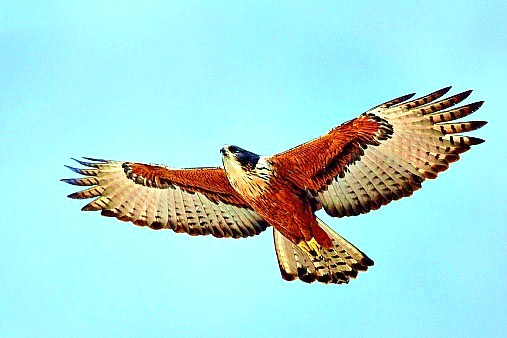|
| Query: Birds & nature magazine | Result: 3943rd of 32675 | |
Rufous-bellied eagle (Lophotriorchis kienerii)
| Subject: | Rufous-bellied eagle (Lophotriorchis kienerii)
| | Poster: | Shahril (different_world_06@hotmail.com)
| |

| Resolution: 507x338
File Size: 53133 Bytes
Date: 2018:02:19 07:42:20
Upload Date: 2018:02:19 09:43:33
|
Rufous-bellied eagle (Lophotriorchis kienerii) is a bird of prey in the family Accipitridae, which also includes the buzzards, hawks and Old World vultures. This species is associated with woodland. The large stick nest is built in a tree and a single egg is laid. The rufous-bellied eagle is a smallish eagle, 54-60 cm long. It has broad, rounded wings, held flat while soaring, and a short, broad tail. It eats mainly birds and small mammals. The adult has blackish upperparts and head. The foreneck and breast are white, and the tail and flight feathers are white barred with dark. The rest of the underparts are chestnut. Sexes are similar. |

|

|

|
Birds & nature magazine
3943/32675 |

|

|
^o^
Animal Pictures Archive for smart phones
^o^
|
|

